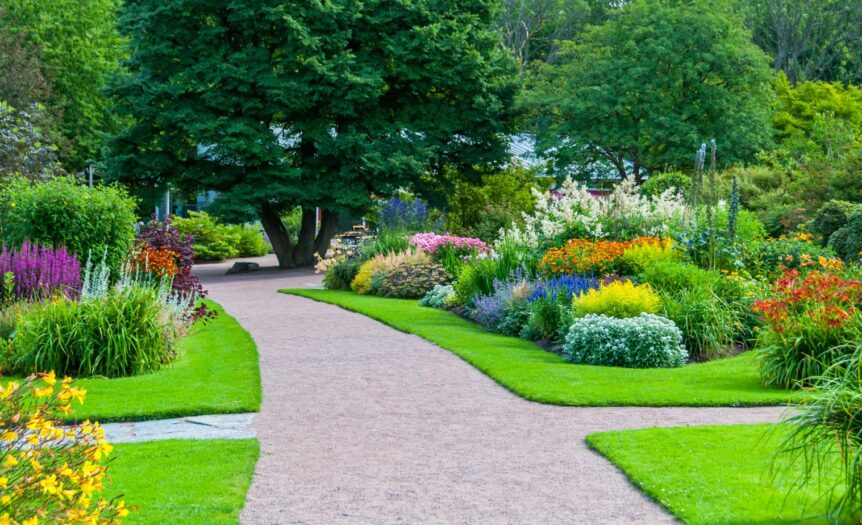In a world where the hustle and bustle of daily life can be as relentless as the spinning reels on TonyBet, finding solace in nature becomes not just a leisurely pursuit but a necessity for wellbeing. Gardening, often perceived solely as an aesthetic pursuit, has profound potential to nurture not just the environment but also human wellbeing. A sensory garden, designed to stimulate the five basic senses – sight, smell, touch, taste, and hearing – is a sanctuary that can provide therapeutic benefits, facilitate educational opportunities, and serve as an inclusive space for community interaction. This article delves into sensory gardens, examining their significance and offering comprehensive guidance on creating one that promotes wellbeing.
The Essence of Sensory Gardens:
Sensory gardens transcend the conventional gardening boundaries by engaging all the senses, creating a rich, interactive experience. They are not just visually appealing landscapes but are intricately designed to incorporate elements that stimulate the senses, evoke emotions, and create a sense of tranquility and connection with nature.
Significance for Wellbeing:
Sensory gardens have a profound impact on physical and mental wellbeing. They serve as therapeutic landscapes for individuals with sensory processing issues, developmental disorders, or mental health challenges, offering a calming and safe environment. For the elderly, especially those with dementia, sensory gardens can evoke memories, promote cognitive functioning, and encourage physical activity. In educational settings, these gardens facilitate experiential learning, allowing children to explore and understand the natural world.
Design Principles:
Creating a sensory garden requires a thoughtful approach that considers the diverse needs and preferences of its intended users. Some essential design principles include:
a. Accessibility: The garden should be accessible to all, including individuals with disabilities. This involves incorporating wide, flat pathways, raised beds, and sensory experiences at various heights.
b. Variety: Incorporate various plants and materials to provide diverse sensory experiences. This includes plants with different textures, colors, fragrances, and tastes, as well as elements like water features, wind chimes, and tactile sculptures.
c. Safety: Ensure that all elements in the garden are non-toxic and safe to touch, taste, or smell. Avoid sharp edges, thorny plants, or deep water features that could pose a risk.
d. Seasonality: Select plants that provide sensory interest throughout the year. This ensures that the garden remains engaging and beneficial regardless of the season.
Elements of a Sensory Garden:
A well-designed sensory garden incorporates various elements that cater to each of the five senses:
a. Sight: Colorful flowers, textured foliage, and visually striking sculptures can captivate the sense of sight. Consider using contrasting colors and shapes to create a visually stimulating environment.
b. Smell: Fragrant plants like lavender, rosemary, and jasmine can enliven the sense of smell. Position these plants along pathways or near seating areas to maximize their impact.
c. Touch: Incorporate plants with diverse textures, such as the softness of lamb’s ear, the roughness of tree bark, or the smoothness of succulents. Tactile sculptures and water features can also provide interesting textures to explore.
d. Taste: Edible plants like herbs, vegetables, and fruit trees invite visitors to engage their senses of taste. Ensure these plants are easily identifiable and safe to consume.
e. Hearing: Elements that produce sound, such as rustling grasses, babbling water features, or wind chimes, can create a soothing auditory experience.
Creating Your Sensory Garden:
a. Planning: Begin by assessing the space and determining the needs and preferences of the intended users. Consider factors like sunlight, soil type, and available space when selecting plants and features.
b. Implementation: Install hardscape elements like pathways, seating, and raised beds. Then, proceed with planting, ensuring a mix of sensory experiences across the garden.
c. Maintenance: Sensory gardens require ongoing care to remain safe and engaging. Regular maintenance tasks include pruning, weeding, and ensuring sensory elements remain accessible and functional.
In Conclusion:
A sensory garden is more than an aesthetic space; it is a haven that nurtures wellbeing through a symphony of sensory experiences. By thoughtfully designing and maintaining a sensory garden, one can create a refreshing environment that benefits individuals and communities alike. Whether in a private backyard, a school, or a public park, sensory gardens have the transformative power to connect people with nature and with each other, fostering a sense of well-being that extends beyond the garden’s boundaries.








